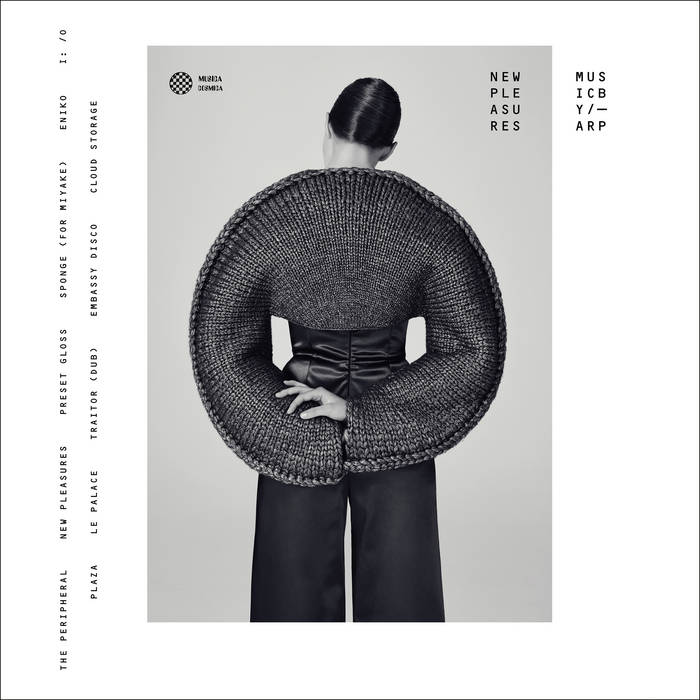In conversation with Quiet Friend
Interview by Shannon Lawlor
Quiet Friend are an electro-pop duo currently based in New York. Initially conceived after producer and Nick Zanca put his mystifying electronic solo-project Mister Lies on indefinite hiatus, guitarist and synthesist Steven Rogers joined Zanca to form Quiet Friend – a sonically illuminating passion-project led by similarly like-minded, imaginative individuals.
Quiet Friend’s nostalgic yet intricately crafted sound could be best experienced amidst an industrialized neon-lit cityscape; while swaying away at a near-slow-motion-pace, as if lost in a ‘80s-induced flickering dream. Their debut LP was released on March 9th via Elestial Sound, and has already caressed the ears of many with it’s overflow of emotive catharsis.
We caught up with Nick Zanca of Quiet Friend on magical connections and bad nights out:
For anyone foreign to Quiet Friend’s aural illumination, how would you personally describe the music you create?
Hmm… Young adult contemporary. Pop music for the socially anxious. Ambient music with an inner scream. Awkward and graceful.
Quiet Friend’s debut self-titled album was released on March 9th via Elestial Sound. Could you detail the recording process, and how it may have differed to past studio encounters?
Steven and I put this record together over the course of three years with our close friend Alex Thompson, who co-produced the record with me and is largely responsible for it’s sound. We brought in about a dozen of our friends around the city to contribute vocals, track synths and strings. A majority of the tracking was done at a studio in lower Manhattan called Harvestworks, which largely specializes in avant-garde composition that heavily utilizes new technologies (composers like Pauline Oliveros and Morton Subotnick were past residents). As someone who has always recorded at home in the past, that was a first for me. We had access to hardware and gear that we could have never afforded had we chosen to stay within our home recording comfort zone. It was important that this record didn’t feel like “bedroom-pop” or didn’t feel like you were looking at a waveform on a SoundCloud page.
Quiet Friend follows your previous project, Mister Lies. How do you feel this has changed, or expanded upon your skill as a musician and writer?
One of the incentives of starting this project in the first place came from touring alone extensively as Mister Lies, and craving organic collaboration and communal music-making. Operating as a solo-artist definitely has its benefits – more economic than creative – but at the same time it also became very easy to fall into a pattern of tunnel-vision. Once you bring other voices in, any megalomanic tendencies are stripped away – in other words, no time was wasted bouncing ideas back and forth with Steven and Alex. Now that this record has been released, I find that collaboration has become my preferred mode of working.
Are there any instruments, pieces of hardware or software that you feel is absolutely essential in projecting Quiet Friend’s signature tone and unique approach?
I have a feeling the answer to this will probably change from release to release – but the star of this particular record to me, is the synth I bought shortly before we started working on it – the Roland D-50. The first batch of demos for this album were all written with that synth. It was produced in the late ‘80s and was Roland’s very first all-digital synth – you can build some very ethereal, icy textures and pads with it. It also happens to be Enya’s weapon of choice, so you know it’s got that “new age” street cred.
If Quiet Friend could collaborate with anyone on the planet, living or deceased – who would it be, and why?
It would never happen in a million years, but for me it’s definitely Mark Hollis from Talk Talk. I try not to deify musicians, but both Spirit Of Eden and Laughing Stock are god-tier records to me – I’ve listened to those records at least once a week and I’ll still notice something that I hadn’t before. His philosophies about improvisation, the power of silence and the cultivation of an atmosphere in the studio are gospel to me. He walked away from the music industry after releasing one solo album 20 years ago and has been almost completely absent from the public eye since. I don’t think he’ll ever get the band back together, and I’m honestly okay with that because those records past him will never stop inspiring me. At this point, I guess working with any atmospherically-driven artists would be fun for me. Frank Ocean seems like a cool guy.
‘Safe’ is a captivating excursion through colour-soaked highways. Lyrically, what was the inspiration behind this song? And where do you usually seek influence from when writing?
That one’s about the weariness of going out in a big city and the sinking feeling that you’ll never be able to keep up with the people you choose to be around. We tried to make that track texturally claustrophobic as a means of illustrating that “bad-night-out”. I try to stay curious and take influence from disparate sources, but lyrics will usually only work for me when I feel like I have a frame of reference or a reason to write them.
How would you describe New York’s live music scene? And how does it compare to playing shows in London or other parts of Europe? (Even as Mister Lies)
In New York, you will never run out of collaborators. It’s all degrees-of-separation. If you dig around long and hard enough, you’ll find players and sound artists that speak your language fluently. Although it’s the biggest privilege of living here, it can also lead to excessive name-dropping and sensory overload if you get too swept up in it. Often, the act of listening becomes secondary to it being a social gathering – the sound becomes a vehicle rather than an end. I hope we can create an atmosphere in live performance where both community and the act of listening can be on parallel levels. We haven’t made it across the pond as a band yet, but in the past I have found the crowds in Europe are the most attentive – that’s not to say our crowds in New York have an attention deficit, but collective listening seems to more commonplace. Also, brutally honest crowds – the first time I ever toured Europe, a girl approached me at the bar after a show I played in Utrecht and went out of her way to tell me all the reasons why she thought my set sucked. I had a lot of respect for that – that would hardly ever happen here in the States.
Care to name some of your personal favourite releases of the year so far?
The Kacey Musgraves record that came out a month ago has honestly resonated with me quite a bit – smartly produced and gorgeously-textured country pop. I, like, definitely wanted to buy a pedal steel guitar after I heard that. Huerco S has also put out some of the most innovative ambient music of the decade, his new record under the Pendant alias is one worth zoning out to. Everyone should check out the NADINE record and not just because I contributed to it – I consider them kindred spirits, we definitely speak a similar language. Technically last year, but if you haven’t heard the L’Rain record yet, what are you doing with your life?
What does the future hold for Quiet Friend?
We have no idea and that’s what’s most exciting. Lots of shows in lots of places, hopefully. More mixes. More collaborations. Seeking out the inspiration that will drive our next material. Always plotting and scheming for the next time we enter a studio.
Order Quiet Friend’s self-titled LP HERE
For more information follow Quiet Friend on Facebook




Leave a Reply